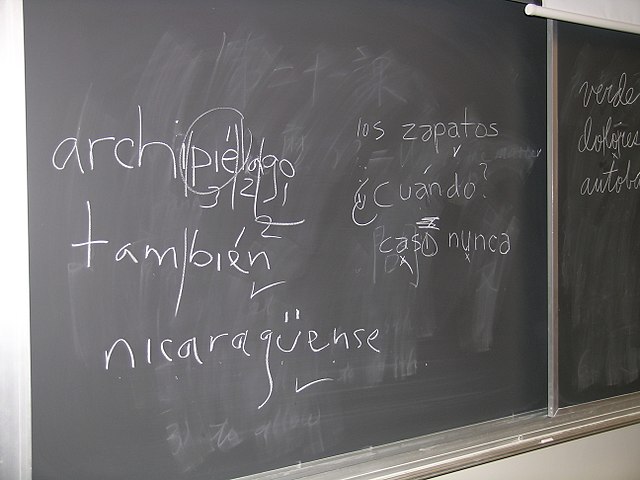Language education – the process and practice of teaching a second or foreign language – is primarily a branch of applied linguistics, but can be an interdisciplinary field. There are four main learning categories for language education: communicative competencies, proficiencies, cross-cultural experiences, and multiple literacies.
Henry Sweet was a key figure in establishing the applied linguistics tradition in language teaching
High school Spanish taught as a second language to a class of native English speakers at an American private school in Massachusetts.
A second language (L2) is a language spoken in addition to one's first language (L1). A second language may be a neighbouring language, another language of the speaker's home country, or a foreign language. A speaker's dominant language, which is the language a speaker uses most or is most comfortable with, is not necessarily the speaker's first language. For example, the Canadian census defines first language for its purposes as "the first language learned in childhood and still spoken", recognizing that for some, the earliest language may be lost, a process known as language attrition. This can happen when young children start school or move to a new language environment.
Blackboard used in class at Harvard shows students' efforts at placing the diaeresis and acute accent diacritics used in Spanish orthography.
A German student learning French. English (1.5 billion learners), French (82 million learners) and Chinese (30 million learners) are the three most commonly studied foreign languages.
Spanish taught as a second language to a class of native English speakers at an American private school in Massachusetts




